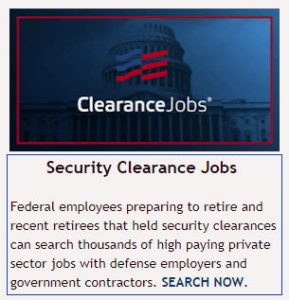Posted on Friday, 5th November 2021 by Dennis Damp
 Print This Post
Print This Post
Open season runs from November 8th through December 13th. There are tools available to evaluate provider options, select your 2022 plan, and submit changes to OPM. Use the following resources to make an informed decision for you and your family’s health care needs.
Forward this article to others that can use this “Open Season” information.

Obtain Copies of Plan Guides
Active Employees
- Request hard copies of desired plan brochures through your benefits coordinator. If you don’t know who that is talk with your supervisor.
- Download plan brochures from the OPM website.
- Request copies direct from plan providers. I typically request and receive brochures direct from GEHA and Blue Cross Blue Shield weeks before they are available on the OPM site.
Annuitants (Retirees)
- Sign up for FEHB Open Season Online – This site is devoted to federal annuitants. Request plan brochures to be mailed to your home address or you can download brochures to your computer. You must register in early November of each year to use this site and annuitants can change enrollments online.
- Download plan brochures from the OPM website.
- Request copies direct from plan providers.
Determine Plan Costs – 2022 FEHB Plan Rates (All rates are now posted online).
Compare Plans – Use OPM’s FEHB Plan Comparison Tool and Consumers’ Checkbook 2022 Guide to Health Plans to find the best FEHB plan for your needs. The Consumers’ Checkbook Guide is available in print and online formats. Federal Retirement readers can pre-ordered their guide at Guidetohealthplans.org and save 20% by entering promo code FEDRETIRE at checkout. The Guide will be released online no later than the first day of Open Season November 8th. Print books will be mailed the week prior to the start of Open Season.
Checkbook’s Guide to FEHB Health Plans helps active and retired federal employees find the best FEHB plan for themselves and their families. By answering a few questions, you’ll see a personalized total cost estimate for each plan, which is the premium plus expected out-of-pocket costs for someone like you, and you’ll understand which plans save you the most money or provide the most coverage.
For retirees, the Checkbook 2022 Guide shows a yearly cost estimate for every FEHB plan with Medicare Part A only and a separate estimate for the FEHB plans with Medicare parts A and B. This allows users to see which plans coordinate best with Medicare, the cost reduction of adding Medicare Part B, and whether the FEHB plan offers Medicare Part B premium rebates.
Use these two excellent tools to drill down to and find the best plan for your personal situation. Compare costs and benefits of up to 4 plans side-by-side. These comparison tools are easy to use and will show you the differences between plans with only a few keystrokes. Before making your final enrollment decision, always refer to the individual FEHB brochures. Each plan’s FEHB brochure is the official statement of benefits.
Changing Enrollment
Annuitants (Retirees)
- Annuitants can change plans online at FEHB Open Season Online. The online service is easy to use and you can track your change submissions.
- Call Open Season Express 1-800-332-9798. (Available early November of each year)
- Send regular mail (Postmarked no later than final date of Open Season) to:
Office of Personnel Management
Open Season Processing Center
P.O. Box 5000
Lawrence, KS 66046-0500
When sending requests by mail clearly state your Open Season request. If you are making an enrollment change, be sure to tell OPM the plan you want, the type of coverage (Self Only, Self Plus One or Family), and the enrollment code. You must include your annuity claim number and social security number on your request. If you are choosing Self Plus One or Family coverage, OPM will also need your dependent and other insurance information.
Federal Employees
- You may be able to enroll online using Employee Express.
- Department of Defense employees can enroll using the DoD automated enrollment systems.
- Health and Human Services and Department of Veterans Affairs employees can enroll using MyPay.
- Department of Energy employees can enroll using the DOE automated systems.
- You can submit Standard Form 2809, Employee Health Benefits Election Form (PDF file) [849 KB], to your Human Resources Office. (Unless you are a U.S. Postal Service employee)
- Postal Service employees can enroll using the PostalEASE online and telephone enrollment system.
Federal Employees Dental and Vision Insurance Program (FEDVIP)
Dental and vision benefits are available to eligible Federal and Postal employees, retirees, and their eligible family members on an enrollee-pay-all basis. Enrollment takes place during the annual Federal Benefits Open Season in November and December. New and newly eligible employees can enroll within the 60 days after they become eligible.
Register online at www.BENEFEDS.com to review and download plan brochures, use their plan comparison tool, and to initiate a change or cancel enrollment. If you aren’t a registered user sign up now. You will be able to review your Dental, Vision, Long Term Care and Flexible Spending accounts. Enrollees can initiate changes during open season, when there is a life event change, or to cancel coverage at any time.
For enrollment/premium questions regarding dental and vision insurance, contact BENEFEDS at 1(877) 888-3337.
Medicare Impact on FEHB Plans
Review the following articles that describe the impact Medicare has on your FEHB provider payments.
- A Marriage of Convenience – Medicare & FEHB
- Medicare and FEHB Options – What Will You Do When You Turn 65?
- What to Consider Before Enrolling in Medicare B
- Medicare Part B and FEHB Update
- How to Delay Part B Premiums
Helpful Retirement Planning Tools
- Retirement Planning For Federal Employees & Annuitant
- The Ultimate Retirement Planning Guide – Start Now
- Medicare Guide
- Medicare and FEHB Options – What Will You Do When You Turn 65? (Part 1)
- What to Consider Before Enrolling in Medicare B (Part 2)
- Should You Change to a Lower Cost FEHB Plan When You Sign Up for Medicare(Part 3)
- Medicare Part B and FEHB Update (Part 4)
- How to Delay Part B Premiums
- Budget Work Sheet
- Social Security Guide
Disclaimer: The information provided may not cover all aspect of unique or special circumstances, federal regulations, medical procedures, and benefit information are subject to change. To ensure the accuracy of this information, contact relevant parties for assistance including OPM’s retirement center. Over time, various dynamic economic factors relied upon as a basis for this article may change. The advice and strategies contained herein may not be suitable for your situation and this service is not affiliated with OPM or any federal entity. You should consult with a financial, medical or human resource professional where appropriate. Neither the publisher or author shall be liable for any loss or any other commercial damages, including but not limited to special, incidental, consequential, or other damages.
Posted in BENEFITS / INSURANCE, ESTATE PLANNING, FINANCE / TIP, RETIREMENT CONCERNS, SOCIAL SECURITY / MEDICARE, SURVIVOR INFORMATION, WELLNESS / HEALTH
Comments (0)|  Print This Post
Print This Post










